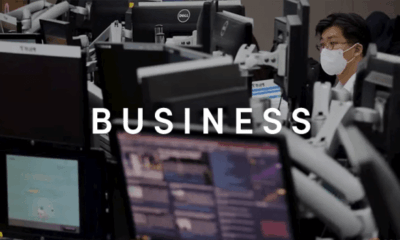Politics
China Deploys Coast Guard Near Senkaku Islands Amid Rising Tensions

China has intensified its military presence around the disputed Senkaku Islands, also known as the Diaoyu Islands, by deploying coast guard vessels and military drones in the vicinity. This move follows comments made by Japanese Prime Minister Sanae Takaichi, suggesting that any Chinese military action against Taiwan could elicit a response from Japan.
On Sunday, the Chinese coast guard reported that its ships conducted what they described as a “rights enforcement patrol” in the waters surrounding the Senkaku Islands. The operation was characterized by the coast guard as lawful and necessary to uphold China’s territorial claims. A statement from the coast guard indicated that vessel 1307 was part of a formation patrolling within the territorial waters of the Diaoyu Islands.
Tensions have escalated between China and Japan, particularly following Takaichi’s warning that an attack on Taiwan might provoke military intervention from Tokyo. This remark drew a sharp rebuke from Beijing, which has demanded a retraction from the Japanese government. China asserts that Taiwan is part of its territory and has not ruled out the use of force for what it terms “reunification.”
Taiwan’s government, however, maintains a strong stance against Chinese claims, with the public largely favoring the status quo without a formal declaration of independence. In light of potential conflict, Taiwan’s defense ministry reported on Sunday the detection of 30 Chinese military aircraft, seven navy ships, and one vessel likely belonging to the coast guard operating nearby. Chinese military activities around Taiwan have been relatively low in recent weeks, but the recent surge in patrols signals a shift in strategy.
The geopolitical stakes are high; an armed conflict involving Taiwan could quickly escalate into a broader regional or global confrontation, potentially engaging allies such as the United States and Japan. Notably, Japan is situated just 110 km (68 miles) from Taiwan, heightening concerns about the implications of military action in the region.
In a related development, Taiwan’s defense ministry revealed that Chinese drones were detected flying between Taiwan and the Japanese islands off the northeastern coast, with some approaching Yonaguni, Japan’s closest island to Taiwan. The ministry characterized these flights as part of a pattern of “joint combat patrols” designed to exert military pressure on Taiwan.
Japan’s diplomatic response has been assertive. Following Takaichi’s remarks, the consul general of China in Osaka made a statement that led to a formal protest from Tokyo, which was further exacerbated when Beijing summoned the Japanese ambassador for the first time in over two years. China’s defense ministry has warned that any intervention by Japan would be futile.
In a further escalation of tensions, China issued a travel advisory for its citizens planning to visit Japan, citing an unstable security environment. While this advisory does not equate to an outright travel ban, it raises concerns about a potential decline in the number of Chinese students studying in Japan. According to the Japan Student Services Organisation, over 123,000 Chinese students were enrolled in Japanese universities last year, making them the largest group of foreign nationals in the country.
Late on Saturday, a state media editorial from China criticized Takaichi’s comments as a dangerous political stunt, asserting that a conflict between Japan and China would not remain localized and could draw in other powers, including the United States.
The situation remains fluid, with both Japan and Taiwan closely monitoring developments. The Japanese embassy in Beijing has not yet commented on the recent tensions. As both nations navigate this complex geopolitical landscape, the potential for conflict remains a significant concern for the region and beyond.
-

 Lifestyle4 months ago
Lifestyle4 months agoHumanism Camp Engages 250 Youths in Summer Fest 2025
-

 Business4 months ago
Business4 months agoKenvue Dismisses CEO Thibaut Mongon as Strategic Review Advances
-

 Sports4 months ago
Sports4 months agoDe Minaur Triumphs at Washington Open After Thrilling Comeback
-

 Top Stories4 months ago
Top Stories4 months agoColombian Senator Miguel Uribe Shows Signs of Recovery After Attack
-

 Sports4 months ago
Sports4 months agoTupou and Daugunu Join First Nations Squad for Lions Clash
-

 Health4 months ago
Health4 months agoNew Study Challenges Assumptions About Aging and Inflammation
-

 World4 months ago
World4 months agoASEAN Gears Up for Historic Joint Meeting of Foreign and Economic Ministers
-

 Business4 months ago
Business4 months agoOil Prices Surge Following New EU Sanctions on Russia
-

 Entertainment4 months ago
Entertainment4 months agoDetaşe-Sabah Violin Ensemble Captivates at Gabala Music Festival
-

 Entertainment4 months ago
Entertainment4 months agoBaku Metro Extends Hours for Justin Timberlake Concert
-

 Business4 months ago
Business4 months agoU.S. House Approves Stablecoin Bill, Sends to Trump for Signature
-

 Top Stories4 months ago
Top Stories4 months agoRethinking Singapore’s F&B Regulations Amid Business Closures









